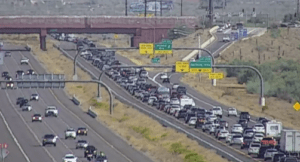
Proposition 400 is the sort of item that has been there for as long as many of us have been in the Valley, but few of us think about it. The one-half cent sales tax has been instrumental in facilitating the growth of our area since its inception in 1986 and continuance in 2004. It will be expiring in a few years without legislative approval to bring it to a public vote.
The Republican-led legislature is taking serious umbrage with it, specifically as it relates to expansion of light rail, and as such it is in serious peril…at least on the surface. But do we still need it?
That answer will swing wildly based on where you live and your demographics. In Scottsdale and Paradise Valley, areas which have shown zero interest in the extension of light rail into their territories, when over 40% of Prop 400 funds were to be dedicated to light rail in the first iteration, it is obvious why there is hesitation. Light rail has always been Phoenix’s baby, with numerous propositions to both fund it and defeat attempts to stop it.
There are reasonable arguments to be made on all sides of light rail: that it should be relegated to the areas that want it, but also that its efficacy is lessened without a larger coordinated effort, that because a city like Glendale doesn’t want to fund it that the rail won’t go out to, say, Cardinals games without a countywide effort. And that’s fair. But there is no denying that this is a region that will always be vehicle-friendly, it’s the nature of building out instead of building up.
However, that is just a chunk of the money; the bulk of it would go towards highways and arterial roads, and if our growth continues at the same pace as it has, that is certainly necessary. But will it? Between our looming water issues and sky-high cost of living, one would have to assume that our rate of growth will slow considerably. It has to. So do we need to spend to support high growth when tepid growth is a significant possibility?
Clearly, funding for road upkeep is necessary. There will be needs for expansions and adjustments as populations shift. But as needs shift, so should the conversation.
This serves as a good moment to reconsider the trajectory of growth in our county, and hopefully will also serve as a good catalyst to think about if this is still necessary. Perhaps a one-quarter or one-third percent tax would be a more reasonable approach that reflects our potential new reality, with light rail projects being more in the domain of municipalities like Phoenix has done. Our legislators have over a year to figure it out, so no one can claim to be taken by surprise.

